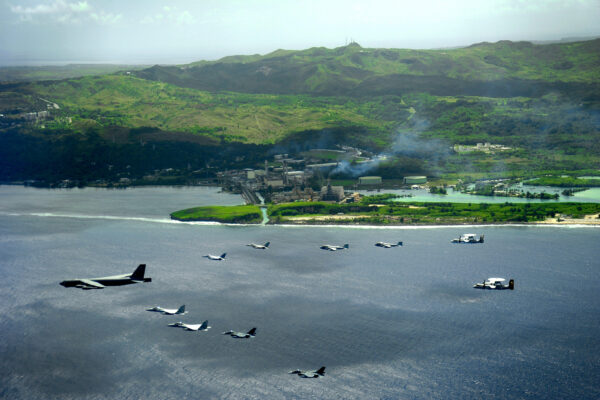
America sent a strong signal on Tuesday of its position in a territorial dispute between China and Japan when it conducted bomber overflights of the Senkaku Islands. The island chain has been at the center of tensions in the Sino-Japanese relationship for some years and lies at the heart of an Air Defense Identification Zone that China declared just days ago.
Chinese authorities’ announcement of the ADIZ unilaterally requires all aircraft wishing to operate within a broad zone of the East China Sea to register their flight plans and other identifying information ahead of time. Failure to comply would, according to the government in Beijing, lead to proportionate responses from its armed forces. The implication being that this applies to the military and merchant aircraft that regularly service and patrol the Senkaku Islands which are administered by Japan and known in China as the Diaoyu Islands.
The Japanese and United States governments both rejected China’s move. Japan’s prime minister Shinzō Abe told parliament that China’s statements “have no validity whatsoever on Japan” and demanded that it “revoke any measures that could infringe upon the freedom of flight in international airspace.” Chuck Hagel, America’s defense secretary, paralleled Abe’s statements in a press release and emphasized that the the United States “view this development as a destabilizing attempt to alter the status quo in the region.”
The Pentagon, addressing questions as to the reasons behind Tuesday’s overflight of two B-52 bomber aircraft, said that the American air presence in the region was the result of a long planned training mission and not an attempt to challenge China’s effort to politically constrain Japan’s ability to defend its claim to the island chain. Nevertheless, American military officials did take care to point out that future operations would follow the standard operating procedures of not filing official flight plans.
Behind the veil of diplomatic discourse, China’s declaration of an ADIZ is part of a broader effort to establish greater control over the country’s offshore spaces and push back the intrinsic threat of American naval dominance in the Western Pacific. Indeed, the announcement mirrored other, less formalized steps that China had taken in recent months to try to regulate more effectively the passage of public and private vessels in areas it considers to be of strategic interest, from stretches of the country’s littoral waters to disputed areas of the South China Sea.
The Chinese Foreign Ministry quickly responded on Tuesday, saying “Japan has no right to make irresponsible remarks or wage deliberate offenses over China’s establishment of the East China Sea ADIZ.” It claimed Japan’s “groundless accusations” were the real potential source of “frictions” that could “undermine regional stability.”
But it is clear that the United States see the ADIZ as a step too far. A White House spokesman insisted that China’s attempts to regulate international airspace, particularly in a region where such actions carry significant external implications, is “unnecessarily inflammatory” and its commitment to this course of action could prove to be extremely “destabilizing.”
The appearance of the B-52 bombers is perhaps the surest sign to date that America, both a treaty partner of Japan’s and a country technically and decidedly neutral in terms of regional territorial disputes, is not prepared to allow an unreasonable escalation of tension.
